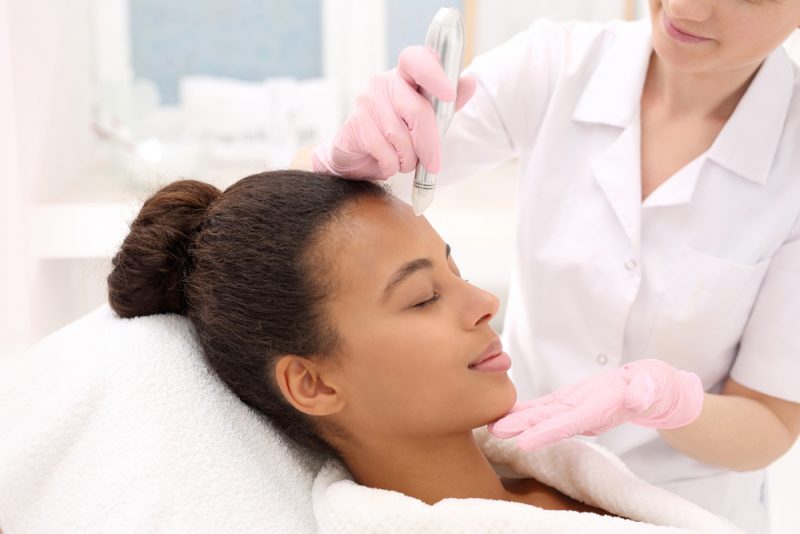Liquid FaceLift
A quick overview of liquid facelift
what is a liquid facelift?
A liquid facelift, also known as a non-surgical facelift or injectable facelift, is a cosmetic procedure that aims to rejuvenate the appearance of the face using injectable dermal fillers and muscle-relaxing injections. It is called a “liquid” facelift because it involves the use of liquid substances rather than surgical incisions and tissue manipulation.
How is liquid facelift performed?
During a liquid facelift, various dermal fillers, such as hyaluronic acid-based fillers, are strategically injected into specific areas of the face to restore volume, fill in wrinkles and fine lines, and enhance facial contours. These fillers can improve the appearance of sagging cheeks, hollowed temples, nasolabial folds, marionette lines, and other areas that have lost volume due to aging.
In addition to dermal fillers, muscle-relaxing injections, such as botulinum toxin (commonly known as Botox), may be used to relax and temporarily weaken the muscles that contribute to facial wrinkles, such as forehead lines, frown lines, and crow’s feet. By targeting these muscle contractions, muscle-relaxing injections can smooth out wrinkles and create a more youthful and relaxed appearance.
The liquid facelift procedure is typically performed by a qualified healthcare professional, such as a dermatologist, a cosmetic or plastic surgeon, who has experience and expertise in administering injectable treatments. The treatment is often customized based on the individual’s unique facial anatomy, desired outcomes, and the professional’s assessment of the patient’s needs.
One of the advantages of a liquid facelift is that it is a non-surgical procedure, which means it generally involves less downtime and fewer risks compared to a traditional surgical facelift. However, the results of a liquid facelift are temporary, typically lasting several months to a year, depending on the specific products used and individual factors. To maintain the desired results, follow-up treatments may be necessary.
It is important to consult with a qualified healthcare professional or plastic surgeon to determine if a liquid facelift is suitable for your specific goals and concerns. They can assess your facial anatomy, discuss potential risks and benefits, and provide personalized recommendations to help you achieve the desired rejuvenation of your face without surgery.
What is the most popular liquid face lift?
The 8-point facelift, also known as the MD Codes™, is a non-surgical facial rejuvenation technique that uses dermal fillers to address specific points on the face to achieve a lifted and youthful appearance. It was developed by Brazilian plastic surgeon Dr. Mauricio de Maio.
The 8-point facelift approach focuses on strategically injecting dermal fillers into specific areas of the face to restore volume, enhance facial contours, and lift sagging features. These eight key points are identified based on an understanding of facial anatomy and the natural aging processs.
By targeting these specific areas, the 8-point facelift aims to create a subtle, natural-looking lift and rejuvenation. The technique considers the balance and harmony of the entire face rather than focusing on individual wrinkles or lines.
The procedure is typically performed by a skilled healthcare professional, such as a dermatologist or plastic or cosmetic surgeon, who has expertise in facial aesthetics and the use of dermal fillers. The specific products used and the amount of filler required will depend on individual factors and the desired outcome.
The effects of the 8-point facelift can be long-lasting, although they are not permanent. The duration of results can vary depending on factors such as the type of filler used and individual factors. Maintenance treatments may be recommended to sustain the desired effects over time.
The eight points of the face that are typically targeted in the 8-point facelift technique include:
Temples: Filling the temples can restore volume and provide a lifting effect.
Cheeks: Adding volume to the cheeks can enhance facial contours and provide a youthful fullness.
Tear troughs: Treating the under-eye area can reduce the appearance of dark circles and hollowing.
Nasolabial folds: Filling the lines that run from the nose to the corners of the mouth can soften their appearance.
Marionette lines: Addressing the lines that extend from the corners of the mouth to the jawline can reduce their prominence.
Pre-jowl area: Enhancing the area in front of the jowls can help lift and improve the jawline definition.
Jawline: Defining the jawline can restore a more youthful and sculpted appearance.
Chin: Adding volume or contouring the chin can improve overall facial balance and proportions.

